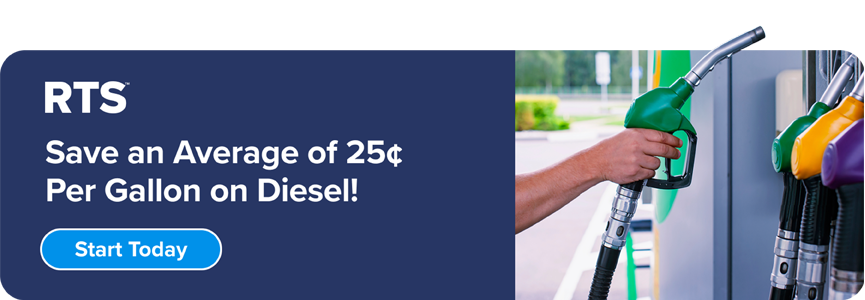
Like so many other things in business, it’s important to do your homework when vetting savings opportunities. That includes making sure that the latest and greatest fuel card you might be compelled to try will truly help your bottom line.
How to Determine If A Fuel Card Is Right for You
At the end of the day, you simply want to be paying less per gallon. With all the fuel cards currently on the market, it might take some unraveling of the discount structure before you can fully determine which one you’re actually going to save the most with. Consider the following questions when shopping around for a fuel card:
- Is the discount offered off the cash price or the credit price?
- Is it retail-minus, cost-plus or both?
- Are discounts given at the pump or as a rebate check?
- Are there any fees for using the card?
- How extensive is the network of stations where discounts are offered?
- Are there additional benefits offered by the fuel card program?
Are Discounts Off the Cash or Credit Price?
Savings off the credit price may not be as great a deal as you think, especially when compared to getting discounts off the cash price. The cash price is less expensive than the credit price. This is because when a fuel station charges more for credit fuel purchases (less for cash), they are trying to offset the processing fees they are being charged by credit card companies.
Getting discounts off the cash price means getting additional money off the cheapest listed price. Whereas discounts off the credit price may end up still being more expensive than or possibly equaling the cash price. A detail like this could be hidden in the fine print of a card agreement, so make sure to ask.
Is the Card Retail Minus or Cost Plus?
Retail-minus pricing means you pay the prices advertised and receive a rebate through your fuel card provider. That price includes the cost of the fuel, taxes and a retail margin covering all expenses of doing business. The “minus” is the negotiated rebate your fuel card provider pays you as a rebate later.
With cost-plus, you don’t pay a fixed retail price. Rather, the driver pays a rack price based on the Oil Price Information Service (OPIS) nationwide index, which varies, plus state and federal taxes. The “plus” is the addition of other fees.
Which model saves more money depends on retail margins and where you fuel up. In places like California or Hawaii where the cost of transporting fuel to retailers is more expensive, cost-plus usually saves more money. In areas like the Gulf Coast where fuel is cheaper and the margins thinner, retail-minus is usually the better option.
Some fuel cards offer a “better of” option. With each fuel purchase, the card will automatically calculate which of the two pricing models provides the most savings, so you get the best available discount on every transaction. That way, fleets and drivers do not have to worry about switching back and forth between retail-minus and cost-plus.
Are Discounts Given at the Pump or As a Rebate?
Some fuel cards provide point-of-sale discounts, meaning the cost of fuel is reduced at the point of settlement (right at the pump). Other fuel card programs offer a rebate model, meaning the full cost of fuel is billed to the driver at the pump and then the fleet receives a check at the end of the month for the total amount of money discounted from the fuel purchases. The rebate model can be confusing to drivers who see the full price on the receipt and think they’re not getting the discount.
Are There Any Fees for Using the Card?
Some fuel card companies charge a small, fixed transaction fee each time you use the card to purchase fuel. There may also be one-time setup fees, monthly fees or in/out-of-network fees. Ask about all of these when determining the true value of the fuel discounts. Most fees are minimal and won’t have much impact on your overall savings but it’s still good to know what to expect.
What Does the Network Look Like?
When looking at fuel cards, it’s important to consider the size and location of the fuel network covered by the program.
- Where do I get discounts? At large, nationwide fuel providers like Pilot Flying J or at independent, mom-and-pop shops? Are there multiple network options?
- Are the stations already along your route? Are the savings worth having to go out of your way at all to find them?
- Does the network cover the lanes you currently run as well as the lanes you want to run?
Are There Additional Benefits to the Program?
There are other benefits to a fuel card program that should be considered, such as contract flexibility, fee waivers (or non-existent fees), scaled savings (the more gallons you purchase, the higher the discount) and discounts on other services or products you can actually use. Some fuel card programs compliment a station’s rewards program with extra points for certain purchases (e.g. 3x myRewards points on fuel at PFJ). Others offer additional discounts on lodging, document scanning, office supplies, etc. At the end of the day, you want to make sure that your fuel card is working for you in as many ways as possible.
A simple Google search generates several fuel card options, some of which will make attractive claims with deceptive discount amounts. Asking the right questions will help you find your answers and hopefully the best fuel card for your needs.
